Click on images to enlarge

habit (Photo: Sheldon Navie)

habit (Photo: Sheldon Navie)
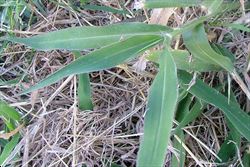
leaves (Photo: Sheldon Navie)
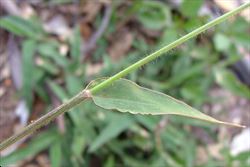
close-up of hairy stem and leaf sheath (Photo: Sheldon Navie)

close-up of leaf blades with hairy margins (Photo: Sheldon Navie)
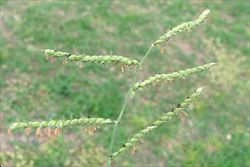
seed-head in flower (Photo: Sheldon Navie)
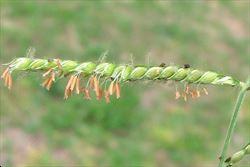
close-up of flower spikelets (Photo: Sheldon Navie)
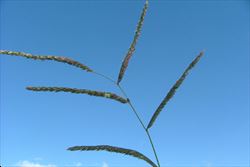
seed-head with immature fruit (Photo: Sheldon Navie)

close-up of immature fruit, each subtended by a hair-like bristle (Photo: Sheldon Navie)
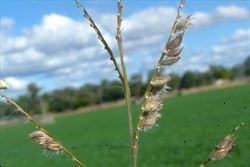
close-up of mature flower spikelets and old seed-head branches with presistent bristles (Photo: Sheldon Navie)
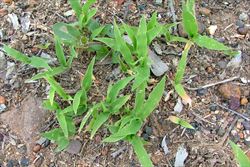
seedlings (Photo: Sheldon Navie)

the seed-heads of the very similar dubi grass, Urochloa oligotricha (Photo: Chris Gardiner)
Scientific Name
Urochloa mosambicensis (Hack.) Dandy
Synonyms
Panicum mosambicense Hack.Urochloa pullulans StapfUrochloa rhodesiensis Stent
Family
Gramineae (South Australia)Poaceae (Queensland, New South Wales, the ACT, Victoria, Tasmania, Western Australia and the Northern Territory)
Common Names
African liverseed grass, bushveld herringbone grass, bushveld signal grass, common urochloa, gonya grass, Katherine liverseed, perennial urochloa grass, sabi, sabi grass, sabigrass, urochloa, urochloa grass
Origin
Native to central and southern Africa (i.e. Kenya, Tanzania, Uganda, Malawi, Mozambique, Zambia, Zimbabwe, Botswana, South Africa and Swaziland).
Naturalised Distribution
Widely naturalised in northern Australia (i.e. in northern Western Australia, large parts of the Northern Territory and Queensland, and in some inland parts of northern and central New South Wales).
Also naturalised on Christmas Island and elsewhere in tropical regions, including in south-eastern USA (i.e. Texas).
Notes
Sabi grass (Urochloa mosambicensis) is regarded as an environmental weed in parts of Queensland, the Northern Territory and Western Australia.

